第81章 REFERENCE WORK AMONG SCHOOL CHILDREN(2)
A wide-awake teacher often gives his pupils the events of the day to study,and if they cannot grasp the situation from the daily papers,juvenile periodicals furnish the best material.For this a classified index is indispensable;it makes available accounts of the workings of government,the weather bureau,mint,and other intangible topics.Until the recent publication of Capt.
King's "Cadet days,"I knew of no other place to find any deion of West Point routine outside of Boynton's or Cullum's histories.One glimpse of either would convince any boy he would rather try some other subject.
A short article often suffices to give the main facts.My experience,both as teacher and librarian,persuades me that the average child is eminently statistical."A horse is an animal with four legs--one at each corner,"is fairly representative of the kind of information he seeks.When he becomes diffuse,we may feel sure he has had help.Sissy Jupes are of course to be found,who cannot grapple with facts.
Working on this principle,I have made liberal use of a book issued by the U.S.Government--"The growth of industrial art."It gives,in pictures,with only a line or two of deion,the progress of different industries--such as the locomotive,from the clumsy engine of 1802to the elaborate machinery of the present day;the evolution of lighting,from the pine-knot and tallow-dip to the electric light;methods of signalling,from the Indian fire-signal to the telegraph;time-keeping,etc.A child will get more ideas from one page of pictures than from a dozen or more pages of deion and hard words.
If lack of space compels one to deny the privilege of going to the shelves,it seems to me more essential for children to have ready access to reference-books,and especially to be taught how to use them,than for grown-up people.The youngest soon learn to use "Historical notebooks,"Champlin's Cyclopaedias,Hopkins'
"Experimental science,""Boys'and Girls'handy books,"and others of miscellaneous contents.If they have a mechanical bent they will help themselves from Amateur Work or "Electrical toy-making";if musical,from Mrs.Lillie's "Story of music"or Dole's "Famous composers";if they have ethical subjects to write about,they find what they need in Edith Wiggin's "Lessons in manners,"Everett's "Ethics for young people,"or Miss Ryder's books,which give excellent advice in spite of their objectionable titles.They can find help in their nature studies in Gibson's "Sharp-eyes,"Lovell's "Nature's wonder workers,"Mrs.Dana's "How to know the wild flowers,"or turn to Mrs.
Bolton's or Lydia Farmer's books to learn about famous people,if they are encouraged to do so.These,of course,are only a few of the books which can be used in this way.As the different holidays come round there are frequent applications for the customs of those days,or for appropriate selections for school or festival.Miss Matthews and Miss Ruhl have helped us out in their "Memorial day selections,"and McCaskey's "Christmas in song,sketch,and story,"and the "Yule-tide collection"give great variety.If the juvenile periodicals do not furnish the customs,they can,of course,be found in Brand's "Popular antiquities,"or Chambers's "Book of days."It is necessary sometimes to use the books for older people,since there is a point where childhood and grown-up-hood meet.I was recently obliged to give quite a small child Knight's "Mechanical dictionary,"to find out when and where weather-vanes were first used,and to give a grammar-school girl Mrs.Farmer's "What America owes to women,"for material for a graduating essay.
A few excellent suggestions for general reference work are given in Miss Plummer's "Hints to small libraries";but in spite of all the aids at command there come times when our only resource is to follow the adage,"look till you find it and your labor won't be lost,"and to accept the advice of Cap'n Cuttle,"When found,make a note on't."